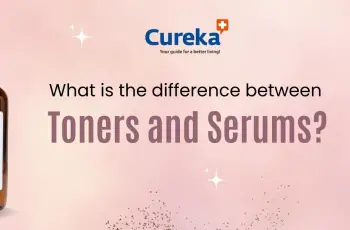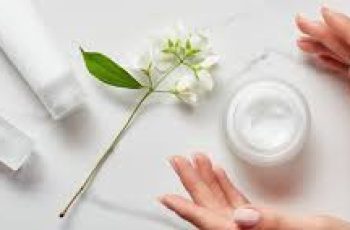
Hydrating vs. Moisturizing: Understanding the Key Differences for Healthier Skin
In the world of skincare, the terms “hydrating” and “moisturizing” are often used interchangeably, but they represent two distinct processes, each essential for healthy skin.
Understanding the difference between them is crucial to establishing an effective skincare routine that addresses your skin’s specific needs.
To shed light on this topic, board-certified dermatologists Lindsey Zubritsky, MD, and Kenneth Mark, MD, have broken down the core concepts of hydration and moisturization, helping you understand which one your skin needs and how to achieve the best results.
What Does Hydrating Your Skin Mean?
Hydration refers to increasing the water content in your skin. Just as you drink water to hydrate your body, skin hydration involves replenishing the moisture levels in the outermost layers of your skin. Adequate hydration is vital for maintaining skin elasticity, a plump appearance, and overall healthy skin function.
When you hydrate your skin, the primary goal is to restore its natural water content, which is essential for various skin functions such as maintaining a glowing, smooth texture. Dehydrated skin can appear dull and lifeless, with increased visibility of fine lines and wrinkles.
How to Hydrate Your Skin
Hydrating the skin is achieved through the use of humectants, which are ingredients that draw water into the skin and help it retain moisture. These ingredients work by attracting water molecules from the air and from the deeper layers of the skin into the surface layers.
Common Hydrating Ingredients:
Hyaluronic Acid – Known for its extraordinary ability to retain water, hyaluronic acid can hold up to 1,000 times its weight in water, making it one of the best ingredients for skin hydration. It helps provide immediate and long-lasting moisture while plumping up the skin for a youthful appearance.
Lactic Acid – This gentle humectant not only hydrates but also exfoliates the skin, making it ideal for sensitive skin types. It helps to remove dead skin cells and allows for better absorption of hydrating ingredients.
Glycerin – One of the most commonly used humectants, glycerin draws moisture from the air and delivers it to the skin’s surface, leaving the skin feeling smooth and hydrated.
Benefits of Hydrating Your Skin
Hydration results in skin that appears dewy, refreshed, and plump. Proper hydration can also help minimize the appearance of fine lines and wrinkles caused by dehydration, making it a key step in achieving youthful, glowing skin.
What Does Moisturizing Your Skin Mean?
Moisturizing focuses on creating a barrier that locks in moisture and strengthens the skin’s natural protective layer. Unlike hydration, which is about adding water to the skin, moisturizing is about sealing in that moisture and preventing it from evaporating, keeping the skin soft, supple, and protected.
Moisturizing is particularly important for those with dry skin, which lacks sufficient oils to maintain a healthy barrier function. Moisturizers are formulated to replenish lost oils and provide long-lasting protection from environmental stressors that can damage the skin.
How to Moisturize Your Skin
Moisturizing your skin involves using products that include ingredients like emollients and occlusives, which help strengthen the skin barrier, lock in moisture, and prevent water loss. These ingredients smooth the skin, leaving it feeling soft and protected.
Common Moisturizing Ingredients:
Ceramides – Lipid molecules that are essential for maintaining the skin’s barrier function. They help restore the skin’s ability to retain moisture and protect against environmental irritants.
Dimethicone – A silicone compound that creates a thin, protective layer on the skin, sealing in hydration and preventing moisture from escaping.
Shea Butter – A rich, natural emollient that nourishes and moisturizes the skin while improving its elasticity.
Petrolatum – A heavy-duty occlusive ingredient that forms a barrier on the skin, preventing moisture from evaporating and providing protection against harsh environmental factors.
Squalane – A lightweight, non-comedogenic moisturizing agent that mimics the skin’s natural oils, offering hydration without clogging pores.
Benefits of Moisturizing Your Skin
Moisturizing helps improve the skin’s texture, making it feel soft, smooth, and supple. It also enhances the skin’s barrier function, reducing the risk of moisture loss and irritation. By locking in hydration, moisturizers also protect the skin from external aggressors like pollution, cold weather, and drying air.
Determining Which Your Skin Needs: Hydration vs. Moisturization
Understanding whether your skin is dry or dehydrated is crucial in determining which type of product you should use. Dry and dehydrated skin can sometimes appear similar, but they are caused by different issues and require different types of ingredients to address them.
Dehydrated Skin
Dehydrated skin lacks water and often appears dull, tight, and lacks elasticity. Dehydrated skin can lead to visible fine lines, a rough texture, and may feel tight or uncomfortable. In such cases, hydrating ingredients are necessary to replenish the water content in the skin.
Signs of Dehydrated Skin:
Tightness
Dullness or lack of radiance
Increased visibility of fine lines and wrinkles
Rough or uneven texture
To test if your skin is dehydrated, you can perform the “pinch test.” Gently pinch the skin on your cheeks or hands and observe how quickly it returns to its normal position. If the skin is slow to bounce back, it likely indicates dehydration.
Dry Skin
Dry skin, on the other hand, lacks oil and is often prone to flakiness, redness, irritation, and rough patches. It may also feel rough to the touch and require moisturization to restore its natural protective barrier and lock in moisture. Moisturizing ingredients like occlusives and emollients are needed to address dry skin concerns.
Signs of Dry Skin:
Flaky patches or rough texture
Redness or irritation
Itching or discomfort
Dry patches that don’t seem to heal
Dry skin needs products with occlusive ingredients that form a protective barrier on the skin, as well as emollients that smooth and soften the skin.
Overlap of Hydration and Moisturization
It’s important to note that hydration and moisturization often overlap, and many products contain both hydrating and moisturizing ingredients. For instance, many moisturizers contain humectants (like glycerin or hyaluronic acid) that hydrate the skin while also providing moisturizing benefits through occlusives and emollients.
How to Hydrate Your Skin Effectively
To properly hydrate your skin, focus on products that contain humectants, which attract and bind water to the skin. Here are some of the best hydrating ingredients:
Hyaluronic Acid – This is a powerhouse ingredient for hydration, as it helps the skin retain moisture and results in a plump, youthful appearance.
Lactic Acid – A gentle exfoliant and humectant, lactic acid helps remove dead skin cells and encourages the skin to absorb more moisture.
Glycerin – A classic humectant that draws moisture from the air to the skin, keeping it hydrated.
Product Recommendations for Hydration:
Neutrogena Hydro Boost Water Cream – This cream is known for its ability to provide intense hydration with hyaluronic acid, leaving the skin looking plump and refreshed.
How to Moisturize Your Skin Effectively
When it comes to moisturization, look for products that contain occlusive and emollient ingredients to lock in hydration and protect the skin. Here are some ingredients to look for:
Ceramides – Help to repair the skin’s barrier and retain moisture.
Dimethicone – Creates a protective layer on the skin to seal in hydration.
Petrolatum and Lanolin – Powerful occlusives that form a barrier on the skin.
Shea Butter and Squalane – Rich emollients that smooth and hydrate the skin.
Product Recommendations for Moisturization:
Tatcha The Dewy Skin Cream – This luxurious moisturizer contains dimethicone, squalane, and antioxidants that provide long-lasting moisture while nourishing and protecting the skin.
Aquaphor Ointment – An excellent choice for severely dry or cracked skin, this ointment forms an occlusive barrier that helps to heal and protect the skin.
Key Takeaways
Hydrating your skin increases its water content using humectants like hyaluronic acid, glycerin, and lactic acid.
Moisturizing focuses on strengthening the skin’s barrier with ingredients like ceramides, dimethicone, and shea butter to lock in moisture.
If your skin feels tight, dull, and has visible fine lines, it likely needs hydration. If your skin is flaky, rough, or irritated, it needs moisturizing.
An effective skincare routine often includes both hydrating and moisturizing steps to keep your skin healthy, smooth, and radiant.
By understanding the distinct roles of hydration and moisturization, you can select the right products for your skin’s needs and enjoy a nourished, glowing complexion.


